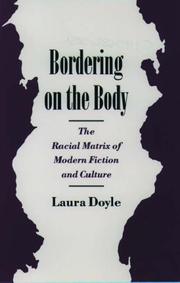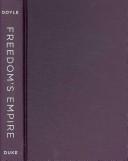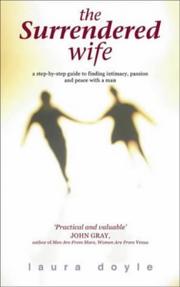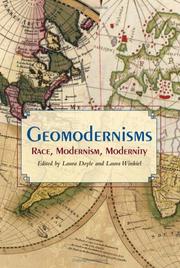| Listing 1 - 10 of 16 | << page >> |
Sort by
|

ISBN: 1280555904 0195358759 9780195358759 9780195086546 0195086546 0195086554 0195086546 9780195086553 0197723306 Year: 1994 Publisher: New York Oxford Oxford University Press
Abstract | Keywords | Export | Availability | Bookmark
 Loading...
Loading...Choose an application
- Reference Manager
- EndNote
- RefWorks (Direct export to RefWorks)
Argues that many major texts of 20th-century literature revolve around the concept of the mother figure. Examining novels of the Harlem Renaissance and Modernism and drawing upon the history of eugenics and anthropology, this study shows how mother figures represent symbols of race and ethnicity.
American fiction --- English fiction --- African Americans in literature. --- Human body in literature. --- Modernism (Literature) --- Mothers in literature. --- Race in literature. --- Crepuscolarismo --- Literary movements --- Body, Human, in literature --- Human figure in literature --- Afro-Americans in literature --- Negroes in literature --- African American authors --- History and criticism. --- Fiction --- Thematology --- American literature --- English literature --- anno 1900-1999 --- African Americans --- Intellectual life --- History and criticism --- 20th century --- African Americans in literature --- Body [Human ] in literature --- Race in literature --- Human body in literature --- Body, Human, in literature.

ISBN: 9780822341598 082234159X 9780822341352 0822341352 9786613022585 1283022583 0822388731 Year: 2008 Publisher: Durham, N.C. Duke University Press
Abstract | Keywords | Export | Availability | Bookmark
 Loading...
Loading...Choose an application
- Reference Manager
- EndNote
- RefWorks (Direct export to RefWorks)
In this pathbreaking work of scholarship, Laura Doyle reveals the central, formative role of race in the development of a transnational, English-language literature over three centuries. Identifying a recurring freedom plot organized around an Atlantic Ocean crossing, Doyle shows how this plot structures the texts of both African-Atlantic and Anglo-Atlantic writers and how it takes shape by way of submerged intertextual exchanges between the two traditions. For Anglo-Atlantic writers, Doyle locates the origins of this narrative in the seventeenth century. She argues that members of Parliament, religious refugees, and new Atlantic merchants together generated a racial rhetoric by which the English fashioned themselves as a "native," "freedom-loving," "Anglo-Saxon" people struggling against a tyrannical foreign king. Stories of a near ruinous yet triumphant Atlantic passage to freedom came to provide the narrative expression of this heroic Anglo-Saxon identity--in novels, memoirs, pam phlets, and national histories. At the same time, as Doyle traces through figures such as Friday in Robinson Crusoe, and through gothic and seduction narratives of ruin and captivity, these texts covertly register, distort, or appropriate the black Atlantic experience. African-Atlantic authors seize back the freedom plot, placing their agency at the origin of both their own and whites' survival on the Atlantic. They also shrewdly expose the ways that their narratives have been "framed" by the Anglo-Atlantic tradition, even though their labor has provided the enabling condition for that tradition. Doyle brings together authors often separated by nation, race, and period, including Aphra Behn, Eliza Haywood, Olaudah Equiano, Nathaniel Hawthorne, Harriet Wilson, Pauline Hopkins, George Eliot, and Nella Larsen. In so doing, she reassesses the strategies of early women novelists, reinterprets the significance of rape and incest in the novel, and measures the power of race in the modern Engl ish-language imagination.--Publisher description.
American fiction --- English fiction --- Race in literature --- Liberty in literature --- Modernism (Literature) --- Crepuscolarismo --- Literary movements --- Freedom in literature --- Liberty as a theme in literature --- History and criticism --- Fiction --- Thematology --- American literature --- Race in literature. --- Liberty in literature. --- History and criticism.

ISBN: 0743209176 Year: 2001 Publisher: London Simon & Schuster
Abstract | Keywords | Export | Availability | Bookmark
 Loading...
Loading...Choose an application
- Reference Manager
- EndNote
- RefWorks (Direct export to RefWorks)
The underlying principle of The Surrendered Wife is simple: The control women wield at work and with children must be left at the front door of any marriage. Laura Doyle's model for matrimony shows women how they can both express their needs and have them met while also respecting their husband's choices. When they do, they revitalize intimacy. [publisher's description]
Book
Year: 2008 Publisher: Durham London Duke University Press
Abstract | Keywords | Export | Availability | Bookmark
 Loading...
Loading...Choose an application
- Reference Manager
- EndNote
- RefWorks (Direct export to RefWorks)
Race in literature --- Liberty in literature --- Modernism (Literature)
Book
ISBN: 1478010045 1478011092 1478012617 Year: 2020 Publisher: Duke University Press
Abstract | Keywords | Export | Availability | Bookmark
 Loading...
Loading...Choose an application
- Reference Manager
- EndNote
- RefWorks (Direct export to RefWorks)
Book
ISBN: 1944648607 Year: 2017 Publisher: Dallas, Texas : BenBella Books, Inc.,
Abstract | Keywords | Export | Availability | Bookmark
 Loading...
Loading...Choose an application
- Reference Manager
- EndNote
- RefWorks (Direct export to RefWorks)
Can a wife single-handedly bring a boring or broken marriage back to life? This improved and expanded edition of Laura Doyle's acclaimed First, Kill All the Marriage Counselors features real-life success stories from empowered wives who have done just that--and provides a step-by-step guide to revitalizing your own marriage. Laura Doyle's marriage was in trouble, and couples counseling wasn't helping. On the brink of divorce, she decided to talk to women who'd been happily married for over a decade, and their advice stunned her. From it, she distilled Six Intimacy Skills--woman-centric practices that ended her overwhelm and resentment, restoring the playfulness and passion in her marriage. Now an internationally-recognized relationship coach, Doyle has shared her secrets with women around the globe, saving thousands of marriages with her fresh, revolutionary approach. Practical and counter-intuitive, the Six Intimacy Skills are about focusing on your own desires and transforming your own life--not bending over backwards to transform your husband. Incorporating these skills will empower you to: Attract his attention like a magnet when you relax more and do less Receive affection not because you told him to make more of an effort, but because he naturally seeks you out Feel more like yourself--and like yourself more If you've been trying to "fix" your relationship and it's not working, maybe the problem was never you, or your husband, or even the two of you as a couple. Maybe the problem is that nobody ever taught you the skills you need to foster respect, tenderness, and consideration. With humor and heart, The Empowered Wife shows you how to improve your relationship in ways you hadn't thought possible. You'll join a worldwide community of over 150,000 empowered wives who finally have the marriages they dreamed of when they said "I do.".
Marriage --- Wives --- Husbands --- Psychological aspects. --- Psychology. --- Psychology.
Book
ISBN: 0743258622 Year: 2004 Publisher: New York : Touchstone,
Abstract | Keywords | Export | Availability | Bookmark
 Loading...
Loading...Choose an application
- Reference Manager
- EndNote
- RefWorks (Direct export to RefWorks)
Why do the things you want elude you?Intimacy. Validation. Romance. Nice things. More time. Most women wish for these every day.In Things Will Get as Good as You Can Stand, bestselling author Laura Doyle says that all of these things are available to us, but receiving them makes women feel uncomfortable. We turn away praise at work, help with the house, an expression of admiration so that we appear to be in control. The result is a Superwoman Syndrome: we are overworked and exhausted -- and we feel alone.In Things Will Get as Good as You Can Stand, Doyle provides steps for overcoming the Superwoman Syndrome and explains why:If you act like you don't deserve something, everyone else will agreeSaying what you want makes you more beautifulGrateful women have better romantic relationshipsYou should let a man support youYou have to be vulnerable to get emotional helpWith her trademark practical approach, Doyle explains why it is "better to receive than to give." She guides you to accepting what you are offered with ease and kindness, which is the expressway to having what you want.
Women --- Self-Help --- Psychology
Book
ISBN: 1439188688 Year: 2002 Publisher: New York : Touchstone,
Abstract | Keywords | Export | Availability | Bookmark
 Loading...
Loading...Choose an application
- Reference Manager
- EndNote
- RefWorks (Direct export to RefWorks)
THIS CONTROVERSIAL APPROACH TO DATING HAS GIVEN THOUSANDS OF SINGLE WOMEN EVERYTHING THEY NEED TO ATTRACT ROMANCE, INTIMACY, AND A MARRIAGE PROPOSAL.Surrendered Single doesn't have to look for Mr. Right -- she attracts him. The principles presented in The Surrendered Single are simple: When you try to control who asks you out and when a man will call, or if you try to corner him into a commitment, you drive him away. When you let him woo you instead, you enjoy the pleasure of being pursued. You feel confident and feminine. Dating becomes fun again. Marriage follows. You stop going it alone.Practical and compassionate, The Surrendered Single is a step-by-step guide that shows you how to:ASK MEN TO INVITE YOU OUT SO THAT YOU ALWAYS HAVE A DATEAVOID THE REMORSE OF "I WISH I HADN'T SAID..."BECOME YOUR BEST SELF AND ATTRACT GOOD MENWhether you're recovering from a breakup or a divorce, are on the dating scene, or want your romance to deepen, The Surrendered Single will bring you the relationship you desire with a man you love -- and who loves you.
Interpersonal Relations --- Dating (Social Customs) --- Psychology --- Family & Relationships

ISBN: 0253217784 9780253217783 Year: 2005 Publisher: Bloomington (Ind.) Indiana University Press
Abstract | Keywords | Export | Availability | Bookmark
 Loading...
Loading...Choose an application
- Reference Manager
- EndNote
- RefWorks (Direct export to RefWorks)
Modernism as a global phenomenon is the focus of the essays gathered in this book. The term 'geomodernisms' indicates their subjects' continuity with and divergence from commonly understood notions of modernism. The contributors consider modernism as it was expressed in the non-Western world.
Race in literature --- Literature, Modern --- Modernism (Aesthetics) --- History and criticism
Dissertation
Year: 2000 Publisher: Ann Arbor : Bell & Howell Information and Learning,
Abstract | Keywords | Export | Availability | Bookmark
 Loading...
Loading...Choose an application
- Reference Manager
- EndNote
- RefWorks (Direct export to RefWorks)
The literatures emerging from the postcolonial world bring new dimensions of linguistic heterogeneity to English literature, opening up rich possibilities for the heteroglossia and interanimation of languages celebrated by Mikhail Bakhtin. Two case studies illustrate the "breaking" and remaking of the English language in postcolonial literatures. Pidgins, oral vernaculars born in the colonial contact zone and developed outside institutional channels, compel our interest as linguistic realizations of a subaltern hybridity and as the most markedly "broken" varieties of English. Within Nigerian literature, representations of pidgin English play a variety of transgressive roles. In two specimens of Onitsha market literature, pidgin is spoken only by clownish chiefs, but in one of these, Ogali A. Ogali's 1956 Veronica My Daughter , pidgin also functions as an anti-language providing a critical perspective on the "big grammar" of standard English. In Chinua Achebe's No Longer at Ease (1960) pidgin is often associated with the seamy underside of life, while in Wole Soyinka's The Interpreters (1965) it is the vehicle for a resistant counterknowledge. Finally, in Ken Saro-Wiwa's Sozaboy (1985), "rotten English," a mixed language strongly colored by pidgin, escapes the confines of quotation marks to become the language of narration. The second case study is of the work of Salman Rushdie, arguably the paradigmatic postcolonial author--a writer positioned between East and West, between the English language and the polylingualism of South Asia, and renowned for his inventive linguistic experimentation. Chapter 7 explores his short story "The Courter," a story of linguistic and personal dislocation and transformation in which a mispronounced word brings about a new reality. Chapter 8 is an extended exploration of the languages in Midnight's Children and the translational magic of Saleem Sinai's "All-India Radio." Chapter 9 examines ways in which Rushdie unsettles borders, redefining the boundaries of words and bringing languages into new relationships by means of such devices as the translingual pun. The concluding chapter briefly explores the implications of this postcolonial breaking of English for the novel and for the language of English literature.
| Listing 1 - 10 of 16 | << page >> |
Sort by
|

 Search
Search Feedback
Feedback About UniCat
About UniCat  Help
Help News
News